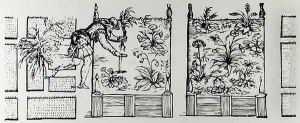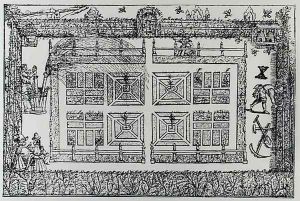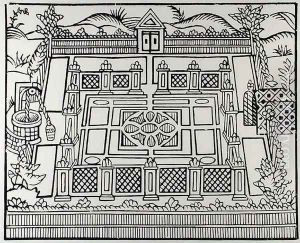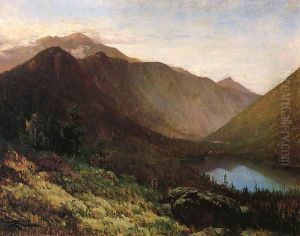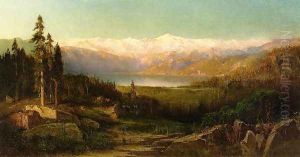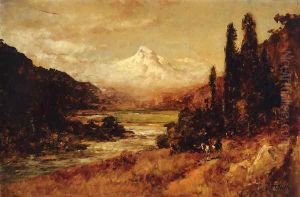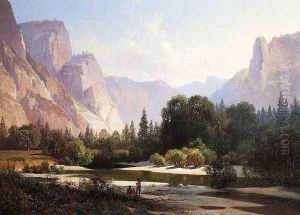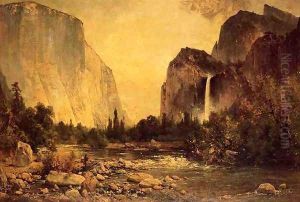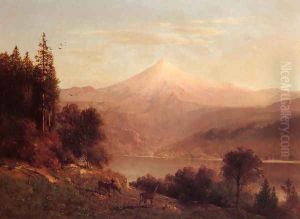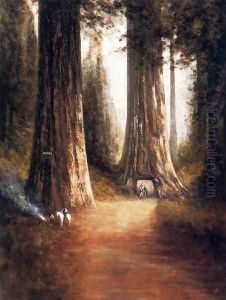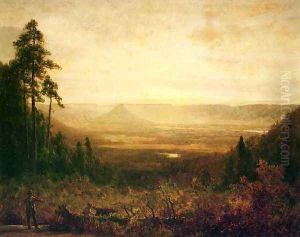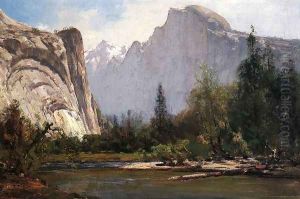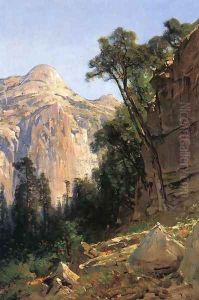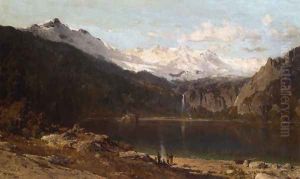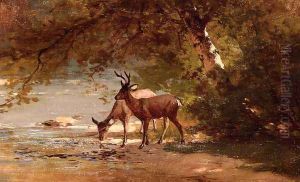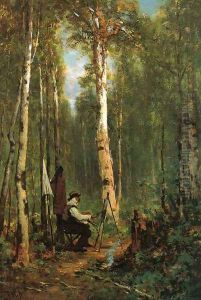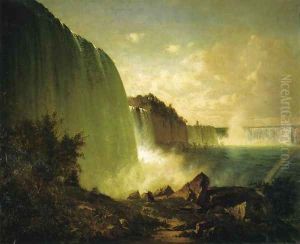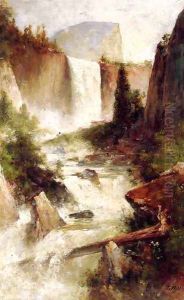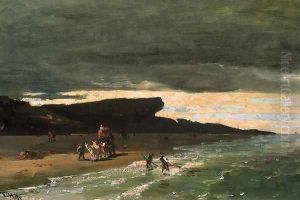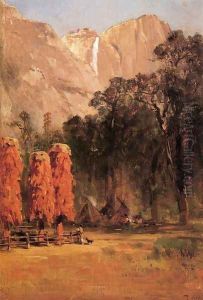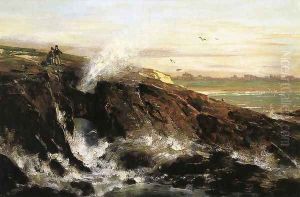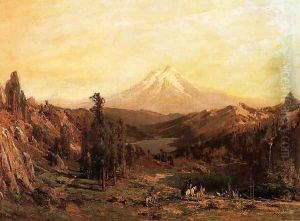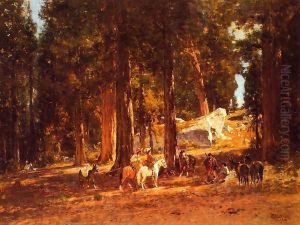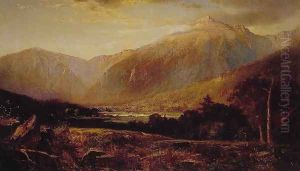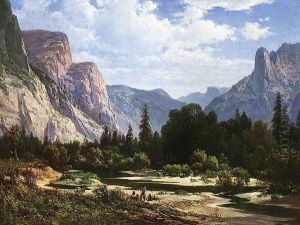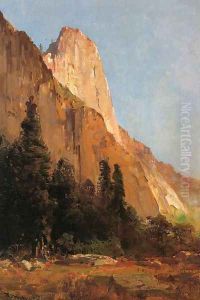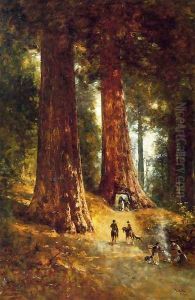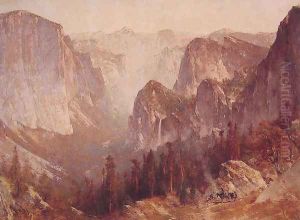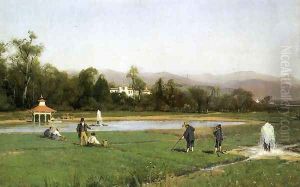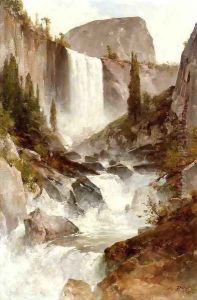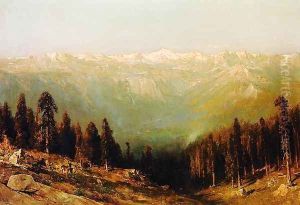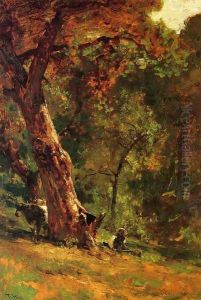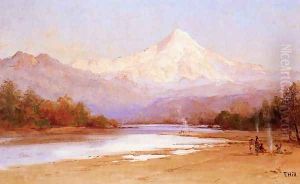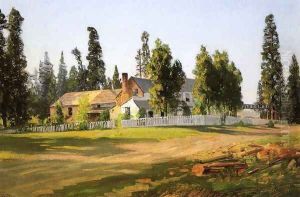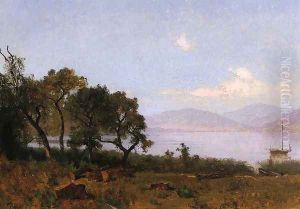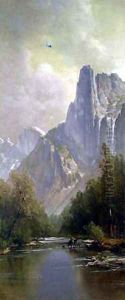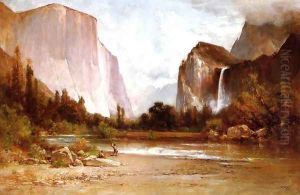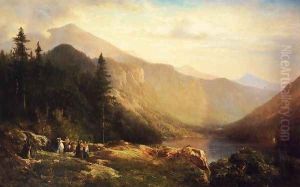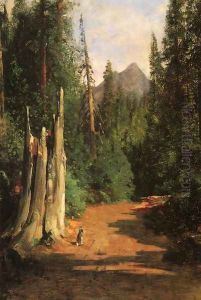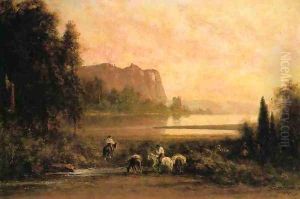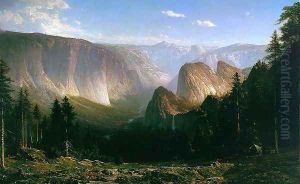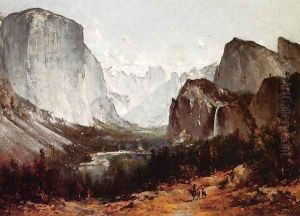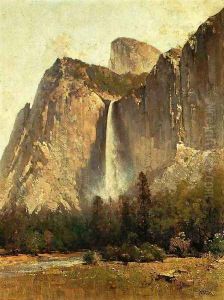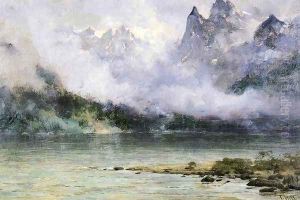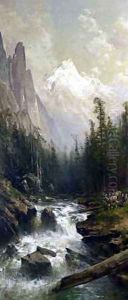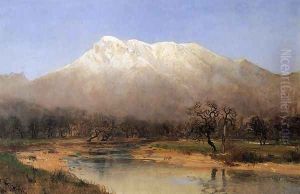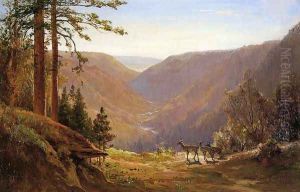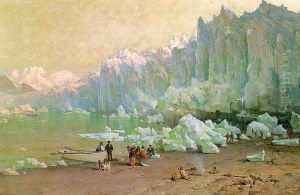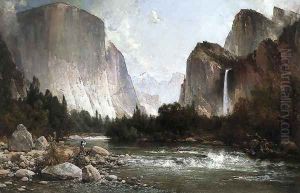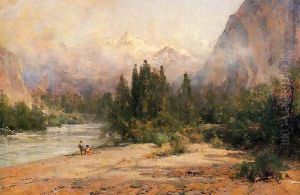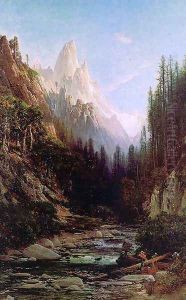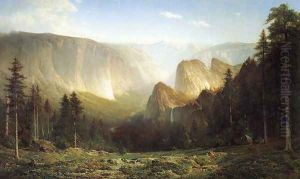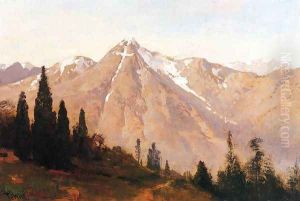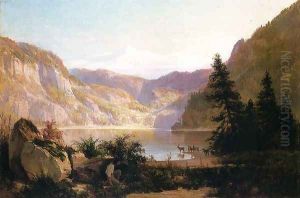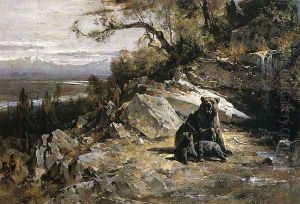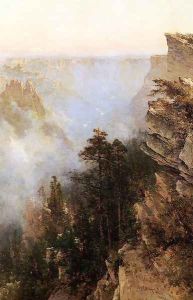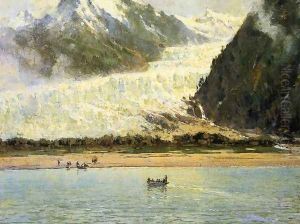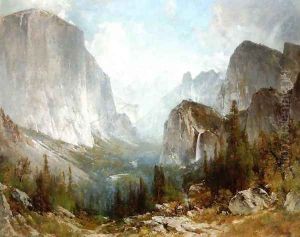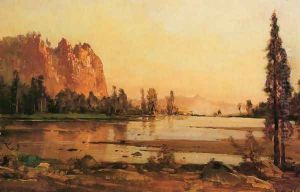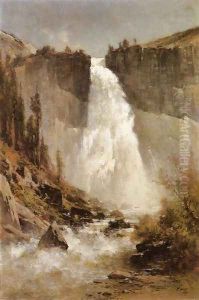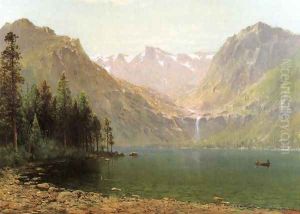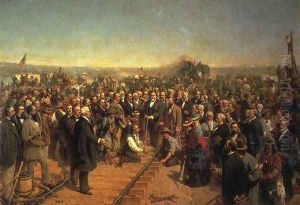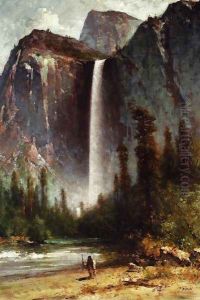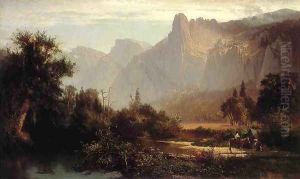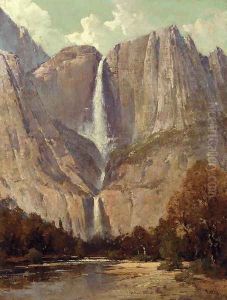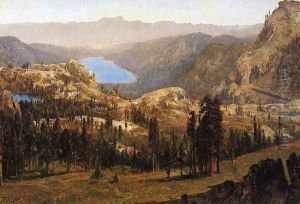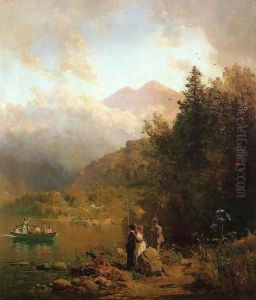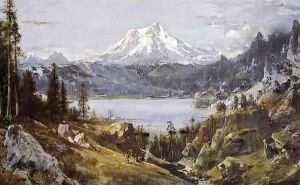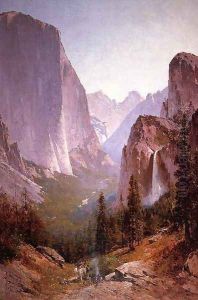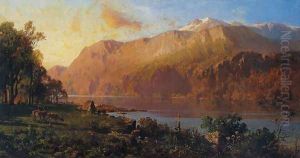Thomas Hill Paintings
Thomas Hill was a British-born American artist of the 19th century, renowned for his landscape paintings. He was born on September 11, 1829, in Birmingham, England, and emigrated to the United States with his family at the age of 15, settling in Taunton, Massachusetts. Hill's initial career was not in art; he worked in a cotton factory and as a carriage painter before turning to fine art. His artistic journey began in earnest when he moved to Philadelphia and studied art at the Pennsylvania Academy of the Fine Arts under the guidance of American painter Peter F. Rothermel.
After marrying and moving to Boston in the 1850s, Hill continued to develop his skills as a painter. He was influenced by the work of the Hudson River School, a group of American landscape painters who emphasized natural beauty and the sublime. Hill's early works were often of the New England countryside, but after an initial trip to the West, his focus shifted to the landscapes of California and the American West.
In 1861, Hill traveled to California and was captivated by the state's majestic scenery. One of his most famous paintings, 'Great Canyon of the Sierra, Yosemite,' was completed in 1867 and is a testament to his skill in capturing the grandeur of the American landscape. Hill's work often featured the Yosemite Valley, the White Mountains, and scenes from his travels along the Pacific Coast.
During his career, Hill was associated with the San Francisco Art Association and exhibited his work widely, including at the Paris Salon. His style is characterized by a strong sense of light and shadow, detailed textures, and a romantic approach to the natural world. Hill's work not only provided a visual record of the American West but also contributed to the appreciation of its beauty and the early conservation movement.
Thomas Hill enjoyed reasonable success during his lifetime and his paintings were sought after by collectors. Unfortunately, later in life, he suffered from a mental disorder, which led him to spend time in the Napa State Hospital for the Insane. Despite this, he continued to paint until his death on June 30, 1908, in Raymond, California. His legacy endures through his contributions to American landscape painting, and his works are held in major collections, including the Metropolitan Museum of Art in New York and the Smithsonian American Art Museum in Washington, D.C.
